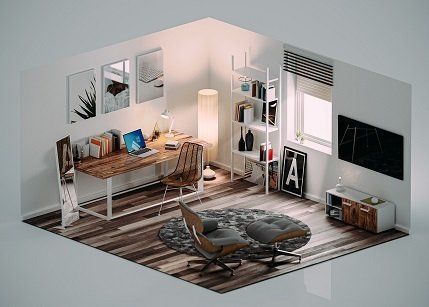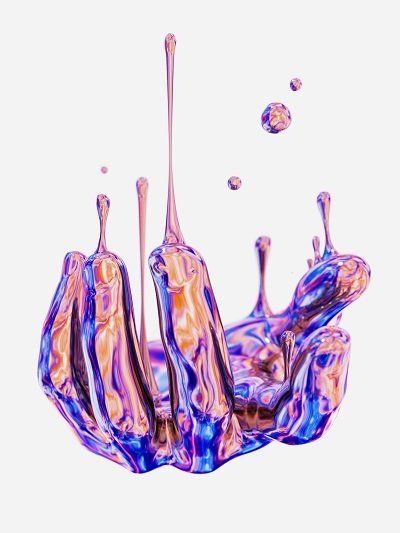Designing in 3D: Understanding the Challenges and Finding Solutions
Designing in 3D: Understanding the Challenges and Finding Solutions

Designing in 3D is an exciting and rewarding process, but it can also be a challenge. With 3D design, you’re dealing with a lot of different elements that need to be considered for a successful outcome.
These elements can include texture, color, lighting, and geometry. Additionally, the complexity of the design can vary depending on the project.
You need to understand the challenges of 3D design and how best to approach them in order to create successful designs.
With the right strategies, you can find solutions that work for your project and help you achieve the desired results.
By understanding the complexities of 3D design, you’ll be able to create amazing designs that stand out from the rest.
What is 3D design?
3D design can be defined as a process for creating an art representation of a design, such as a building, product, or furniture item, as a digital model. This digital model can then be used for further design processes, such as engineering analysis, manufacturing, or visualization.
With 3D design, you have the ability to create an entirely new and unique world from scratch by designing your ideas in 3D. This gives you a lot of freedom to create any design you want.
3D design isn’t limited to any specific industry or type of design. You can use it to create just about anything, from a new product to an architectural structure. The best way to understand 3D design is to think of it as a virtual reality.
You can see your design in a 3D environment, and it’s almost like being inside the design. 3D design allows you to experience your design as if you’re actually there.
This is especially helpful if you’re designing a product or architectural structure.
You can see how it will look in real life and how others might see it. It also allows you to make adjustments to your design as needed until you’re happy with the result.
Challenges of 3D design
When you’re designing in 3D, you have to consider a number of elements that you wouldn’t normally think about when designing in 2D. There are different challenges that come with designing in 3D that you need to be aware of and plan for in order to create the best design possible.
Some of these challenges of 3D design include:
- Texture - In 2D design, you have the ability to add texture to your design, such as stamping it on. However, when designing in 3D, texture is an entirely different thing. You need to actually create the texture in the design and apply it to the surface. This can be a challenge depending on the design. With product design, it can be challenging to create a texture that looks realistic but is also easy to create.
- Color - When designing in 3D, you need to take the color palette into consideration. You don’t want to choose colors that are too bright or too dull because you won’t be able to see them well in your design. Instead, you want to choose the right colors that work well together and are easy to see. This may be challenging if you’re not sure which colors to use.
- Lighting - Lighting is an important part of 3D design because it allows you to see your design in its true form. You want to make sure the lighting in your design is correct since improper lighting can make it look different than intended.
This can be challenging because it can be hard to make sure all of the lights are correct in your design.
- Geometry - This refers to the shape of the design and how it’s formed. You need to make sure your 3D design has the correct geometry so it looks the way you want it to. This can be challenging if you’re not sure how to properly create it.

Elements of 3D design
- Text - Text is an important part of 3D design, especially if you’re working with a product design. It allows you to label your design and provide information about the product. This can help you design better and achieve the desired results.
- Color - Color is another important part of 3D design. It allows you to add and modify the color in your design. This is helpful if you want to change the color of your design or make it more vibrant.
- Lighting - Lighting is important because it allows you to see your design in its true form. It’s what gives your design life and makes it come to life.
- Materials - Materials are the actual items that make up the design. They can be anything, such as wood or metal.
This is important because it allows you to apply materials to your design. You can use materials to change the look and feel of your design.
Complexity of 3D design
The complexity of 3D design can vary depending on the project. A small design, such as a product that includes a couple of surfaces, may be easy to create. However, a large architectural design with a lot of different surfaces may be more difficult to create.
The complexity of 3D design can depend on the following factors:
- The design - The design is the main factor that determines the complexity of 3D design. If you’re designing a simple product, it can be easy to create. However, if you’re designing a large architectural structure, it can be more challenging.
- The software - The software you use for 3D design can also impact the complexity of the design. Some programs are easier to use than others and make the design process easier.
- The designer - The designer can also impact the complexity of the design. If you’re new to 3D design, it can be challenging to create a complex design compared to an experienced designer.
Strategies for finding solutions
When designing in 3D, you need to make sure you’re prepared for the challenges that come with it. You need to plan for these challenges and find ways to overcome them so you can create an amazing design. There are several strategies you can use to find solutions for the challenges of 3D design.
These include:
- Plan ahead - When designing in 3D, it can be challenging to create everything at once. Instead, you should break down the project into smaller sections and create each section separately. This allows you to better manage your time and stay on track with the design.
- Experiment - Experimenting with different elements of your design can help you find solutions for some of the challenges. This can help you better understand the design and identify areas where you can make changes.
- Ask for help - At some point, you may come across a challenge that you can’t solve on your own. In this instance, you should seek help from someone who can offer their expertise.
- Keep notes - You don’t want to forget any of the challenges you faced during the design process. Instead, keep notes on what challenges you faced and how you overcame them. This can help you with future designs.
- Stay organized - Designing in 3D can become very messy if you’re not organized.
Make sure you’re staying organized throughout the design process so you know where everything is and can find it easily when you need it.

Tips for successful 3D design
There are several steps you can take to increase your chances of success when designing in 3D. By following these tips, you can make the design process easier and achieve the best results.
These include:
- Understand the design brief - Before you start designing in 3D, you need to understand the design brief. This is a document that outlines the client’s needs, specifications, and expectations. It is the go-to guide for the design process, so you need to know the information in it before you create your design.
- Plan the design - After you’ve understood the design brief, you need to plan your design. This includes creating a design brief and outline that you can use to guide the design process. This can help you stay on track and make sure you create something that meets the client’s needs and expectations.
- Create a model - After planning your design, you need to create a model. This is the first part of the design process and allows you to create a mock-up of your design. It gives you a visual of what your design will look like and allows you to make changes as needed until it’s perfect.
- Test the model - After you’ve created your model, you need to test it. This is important because it allows you to see how the design will look and function in the real world. This will help you make any changes needed to ensure your design meets the client’s needs and expectations.
- Create a render - After you’ve tested your model, you need to create a render. This is how you show off what your design looks like. It includes a visual of what it will look like as well as any images, videos, or animations that help show off the design in action.
- Deliver the final product - Once you’ve created your render, it’s time to deliver your final product.
At this point, all of the work is done and it’s time for the client to review and approve your design before moving forward with production.
Benefits of 3D Design
There are plenty of benefits to using 3D design for your projects.
Some of the biggest benefits include:
- A better understanding of the design - When you use 3D design, you’ll have a better understanding of what your design looks like and how it will function. This will help you make changes as needed to ensure that the design meets all of the client’s needs and expectations.
- Cost-saving - Using 3D design will help you save money because it allows you to create mock-ups that show what the final product will look like before going into production. This allows you to make any changes needed before spending time and money on creating a final product that doesn’t meet all of your client’s needs and expectations.
- Faster development process - Using 3D design will allow you to create mock-ups faster than if you were using 2D designs, which means your development process is going to be faster as well.

Final Thoughts on 3D Design Process
The 3D design process is fairly simple but requires a lot of work from start to finish. If you are interested in getting into 3D modeling, this process can give you a good idea of what it will take to get there.
However, if you are interested in 3D modeling for fun, you can find plenty of tutorials online that will show you how to use your computer and other software to create 3D models for fun.












